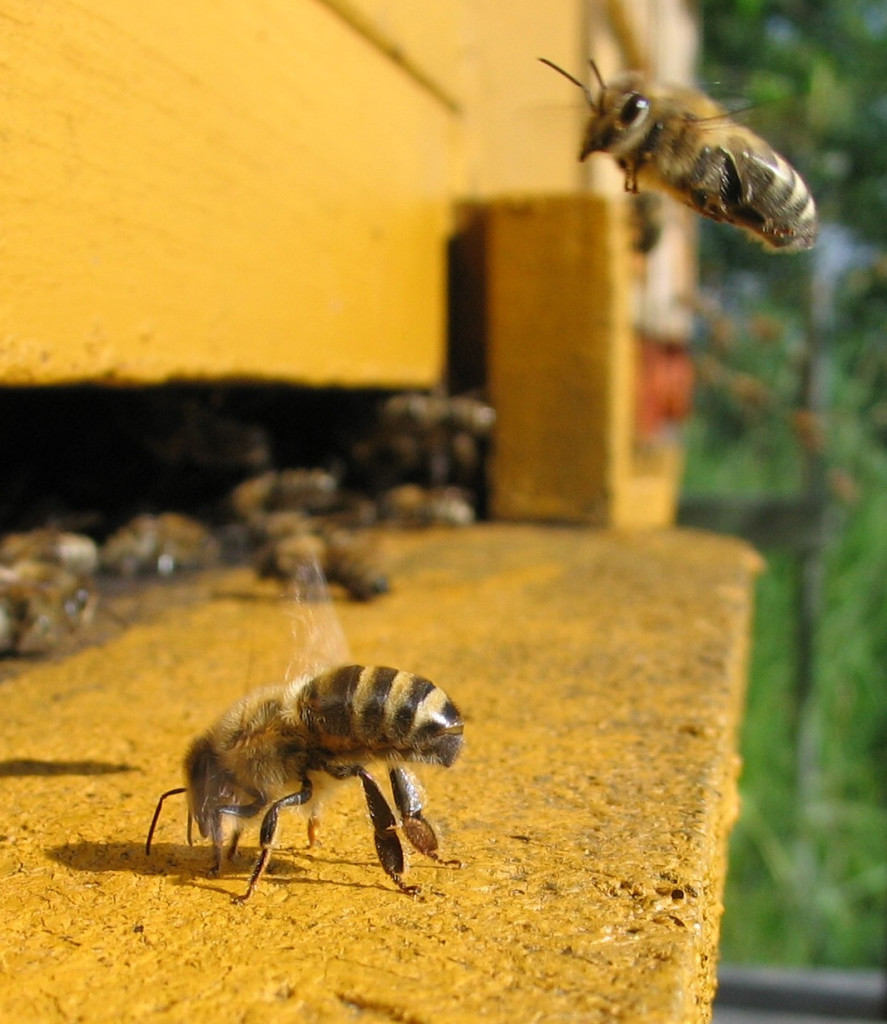 Spring is one of the most important and certainly the most planned-for seasons for the beekeeper. The excitement of spring is multiplied by the gradual reappearance of bees flying to and fro as they enter and exit the hive. As worker bees carry out household cleaning duties you notice field bees returning with full sacks of pollen on their back legs. Nature is waking up after a long winter’s nap.
Spring is one of the most important and certainly the most planned-for seasons for the beekeeper. The excitement of spring is multiplied by the gradual reappearance of bees flying to and fro as they enter and exit the hive. As worker bees carry out household cleaning duties you notice field bees returning with full sacks of pollen on their back legs. Nature is waking up after a long winter’s nap.
When temperatures rise up near 50 degrees on a sunny day, you may find yourself mesmerized enough by the increasing hive activity, and you’ll be tempted to open the hive to evaluate your colony’s condition. But reconsider. You should take great caution when reopening the hive after the winter for the first time, because opening too soon could be damaging to your colony.
Here’s a trick: Instead of opening the hive, one harmless management practice is to test the weight. Simply lift up on the back of the hive to feel its weight. In early spring, your hive should way approximately half of what it weighed in the late fall. If you think the hive is more than half, then there is no cause for concern, and no need for further action. You need only to plan for warmer weather, when the temperature hovers around 60 degrees for more than a few days in a row. At that point, the hive can be more safely opened and examined to determine the colony’s overall health.
However, if the hive is too light, you may need to do an emergency feeding.
Colonies are often lost in early spring because the weather patterns are so unstable. When bees don’t have regular access to food, they can die because of starvation. When this happens, bees have to become more active and they start using more energy as efforts are turned to raising brood, which in turn requires even more food in the hive.
If you will be supplementing food for your hive, the food should be placed as close to the cluster as possible while keeping the hive open as briefly as possible. Any food supplement should be of low moisture content, and homemade candy (or bee fondant) is a favorite of many beekeepers. It is made of commonly-used products, it is soft and low in moisture, and it can be placed on frames just above the cluster. Winter patties are available through most bee supply companies and are a good source of food in early spring. They are high in carbohydrates and have a percentage of protein substitute, which is needed in brood rearing.
It’s important to remember, early inspections can be surprising after a long winter. When night temperatures crawl back across the freezing line toward warmer weather, the colony brood area will start to expand and in a short time, new bees will begin to hatch out. The colony size and configuration at this time will change rapidly, so it is important to understand and notice the events taking place so that management techniques can be done more timely in the future to benefit the continued growth of the colony.
Learn how to make bee fondant correctly – time, acid, and temperature:











6 Comments
I have designed a board that allows you to see what is going on it your hive any time of the year without ever breaking down your hive.
Even if there is 2 foot of snow outside you can see your bees if they have move to the upper box were the heat is concentrated.
This board is designed to replace the inner cover board. It is a year round board. I have been using this board for more then 2 years now. It will be sold in my store when it open this spring. Go to Summer Shade Bees and Beekeeping Equipment / Facebook, I have pic of my bees viewed through this board viewed at different time of the year.
Patent paper work is on it’s way to the patent office.
Great job Carl!
i live in Northwestern Ontario where we have long, severe winters and beekeeping can be a challenge. Last year I had 2 hives. As the end of the summer approached, one give robbed out the other and killed the queen. So because winter was approaching I had to combine the hives into one which I did with success. Well they survived the winter and are doing well but I will have to split the give into 2 gives again. Amy suggestions on an easy way to do this?
i live in Northwestern Ontario where we have long, severe winters and beekeeping can be a challenge. Last year I had 2 hives. As the end of the summer approached, one hive robbed out the other and killed the queen. So because winter was approaching I had to combine the hives into one which I did with success. Well they survived the winter and are doing well but I will have to split the hive into 2 hives again. Any suggestions on an easy way to do this?
I’ve got my speakers maxed out and still can’t hear more than 1 word out of 20.
Thank You for the video but would it be possible to have a written recipe to go along for this?
CC only goes so far on YT.
Thanks